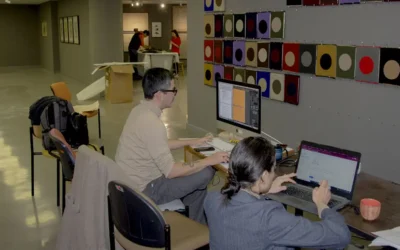The Evolution and Overlap of Museum DAMS and CMS

Rachael Cristine Woody
For those newer to museum digital collections, it can appear at-a-glance that a museum Digital Asset Management System (DAMS) offers the same or similar functionality to that of the museum Collections Management System (CMS).
In this post we’re building off the knowledge we established last week in my blog post Does Your Museum Need a DAMS?. In this post we’re exploring the differences and overlaps between a museum DAMS and CMS, and how they’ve evolved their cross-functionality to address real-world needs.
The Digital Asset Management System (DAMS)
The original DAMS purpose was as a digital file storage mechanism. An object would be photographed or scanned with that file permanently stored in the DAMS. Standalone DAMS products were built for digital file storage, preservation, and management as their core functions. Over the years, DAMS have evolved and many now offer a way to assign descriptive data to files and deliver digital files to the public.
The Collections Management System (CMS)
The original CMS purpose was to manage collection information in the form of metadata. The CMS initially started out as capturing text information only, but now many platforms support including digital files. Notably, the CMS was originally focused on collection description and management. It’s only recently that public access to the collections became an equally valuable function of the CMS.
DAMS vs CMS: Core Functionality
Here’s a more simplistic breakdown on the core functions for each:
|
What’s a DAMS?
Focus: digital file management |
What’s a CMS?
Focus: information management |
The Software Evolution
As internet speed increased and digital file storage became cheaper, software in general moved toward cloud or online-only instances. In fact, very few products still require a local computer to run on. With this shift toward easy and affordable product access combined with user expectations that “everything is online”, many museums have adjusted accordingly. With the user-led requirement to include high resolution digital files of the collections online, both museum DAMS and CMS products are evolving to fit that need. Finally, with the global pandemic, the requirement that the collection data and digital assets be available online has forced any remaining museums still trapped to a local computer to move to online-only DAMS and CMS services.
The DAMS and CMS Evolution in Cross-Functioning
In addition to supporting remote access for both museum staff and audiences both museum collections management systems and digital asset management systems have further evolved the functionality they provide.
Now… both DAMS and CMS can offer:
- Public access and/or a delivery mechanism
- Affordable options for both specialized and general consumers
- Cross-functionality
Where DAMS and CMS Overlap
In most digital asset management systems and collections management systems you can now:
- Upload and display digital files within a database
- Manage, organize, delete, and internally control digital files
- Attach data to the digital file about the file
- Assign the digital surrogate of the physical object to the object record
- Use basic digital preservation mechanisms
- Offer public access to digital files via controlled access or publishing them online
Conclusion
So, you may be asking yourself “Can I get away with buying just one?”. The answer is “Yes.”, but there are caveats. In whichever system type you choose (DAMS or CMS) you need to ensure that your product choice can perform the basic core functions typical of both a DAMS and CMS. Taking that one step further, the functions and workflow available in the product need to support your museum in the way staff need. Otherwise process and accountability measures may need to be overhauled. The difference lies in how well the functions work and whether or not they meet your requirements. Next week we’ll explore how to figure out a DAMS solution when you only have a CMS.

Rachael Cristine Woody
Expert Rachael Cristine Woody advises on museum strategies, collections management, and grant writing for a wide variety of clients. In addition to several titles published by Lucidea Press, Ms. Woody is a regular contributor to the Think Clearly blog and a popular presenter. Register here for her upcoming webinar, “The Essentials of Evaluating the Museum DAMS vs CMS” on October 27, 2021. And learn about Lucidea’s Argus solution for powerful and innovative museum collections management.
Similar Posts
How to Incorporate Interns in Museum CMS Projects: Data Creation
A museum expert details how interns can be successfully included in museum CMS projects at the data creation stage.
How to Incorporate Interns in Museum CMS Projects: Data Capture
A museum expert highlights how interns can be included in museum CMS projects at the data capture stage
How to Incorporate Interns in Museum CMS Projects
A museum expert highlights how interns can be included in museum CMS projects with three project ideas.
Create a Start-to-Finish Process for Cataloging Objects in the Museum CMS
A museum expert outlines the start-to-finish process for cataloging objects into a new museum CMS.
Hosting service
Enjoy all of the benefits of your Lucidea solution with secure, reliable, stress free hosting
Programs & incentives
No matter your size or budget, we’ve got you covered, today and tomorrow




Leave a Comment
Comments are reviewed and must adhere to our comments policy.
0 Comments